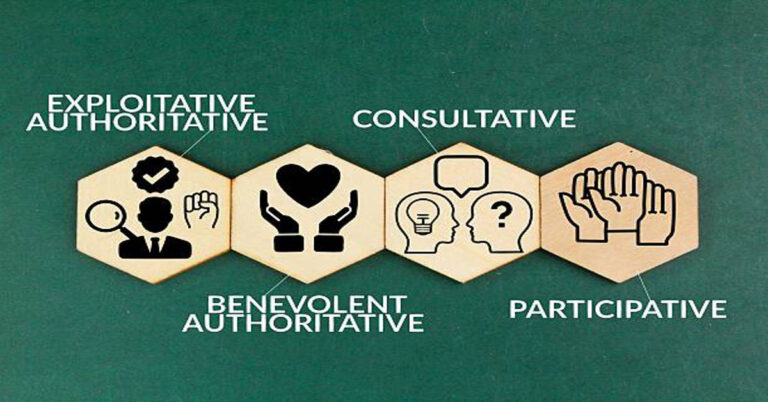Coomer: Digital Overstimulation and Modern Self-Control
In recent years, the term “Coomer” has become a popular internet archetype representing the growing issue of compulsive digital behavior and overstimulation. While the term originated as a meme, its meaning has expanded into a broader cultural commentary on the addictive nature of online gratification and the struggle for self-discipline in a hyperconnected world.
The “Coomer” is not a person to be mocked but a mirror held up to modern society — a reflection of what happens when constant stimulation replaces purpose, and instant pleasure outweighs long-term fulfillment. In a world where information, entertainment, and indulgence are just a click away, millions of people are quietly trapped in cycles of digital dependency that leave them drained, distracted, and disconnected.
This article explores the Coomer mindset as a psychological and cultural phenomenon — explaining its origins, mechanisms, consequences, and healthy solutions for recovery and balance.
1. Origins and Meaning of the “Coomer” Archetype
The term Coomer first appeared in online meme culture as a caricature of a man addicted to instant gratification, typically associated with excessive consumption of online content. However, beneath the humor lies a deeper metaphor for a universal human struggle: the difficulty of managing impulses in an age of limitless access.
In modern digital life, stimulation is available at all times — through social media, video platforms, games, and algorithm-driven entertainment. The Coomer archetype represents anyone whose relationship with online pleasure, entertainment, or stimulation becomes compulsive and unhealthy. It’s less about one behavior and more about the loss of control caused by the constant availability of dopamine triggers.
Psychologically, the Coomer can be seen as a symbol of dopamine overexposure — a state where the brain’s reward system becomes desensitized from continuous short-term rewards. This results in lethargy, lack of motivation, and disinterest in real-world challenges.
2. The Science of Dopamine and Digital Addiction
To understand the Coomer mindset, it’s essential to explore how dopamine — the brain’s “motivation molecule” — works. Dopamine isn’t simply a pleasure chemical; it’s responsible for anticipation and reward-seeking behavior. Every time we experience a small reward — a social media like, a video click, or even a snack — dopamine is released.
How Digital Overstimulation Works
| Trigger | Dopamine Response | Long-term Effect |
|---|---|---|
| Constant content consumption | Frequent dopamine spikes | Reduced sensitivity, need for stronger stimulation |
| Multitasking online | Fragmented attention | Decreased focus and memory |
| Algorithmic recommendations | Reward unpredictability | Addiction-like reinforcement |
| Excessive entertainment | Low effort, instant reward | Loss of motivation for real goals |
Over time, the brain adapts to frequent spikes by reducing dopamine receptors. This means that normal life activities — like studying, exercising, or socializing — start to feel boring compared to the constant digital high. The result is a loop of overstimulation, dissatisfaction, and fatigue.
This cycle explains why many people today report lower motivation, shorter attention spans, and higher anxiety — all symptoms linked to the overstimulated brain.
3. The Coomer as a Cultural Symbol
The Coomer archetype transcends its internet meme origins. It represents a generation shaped by instant access and shrinking patience. The character is often portrayed as lonely, fatigued, and disconnected — but more importantly, as someone who has surrendered control to the digital world.
In cultural terms, the Coomer embodies digital dependency — the condition where one’s identity, habits, and emotions are influenced by the constant need for stimulation. Whether through gaming, scrolling, binge-watching, or other digital loops, the modern Coomer’s struggle is universal: craving satisfaction yet never feeling fulfilled.
Culturally, this reflects a broader issue — a society where comfort has replaced challenge, and where meaning is substituted with distraction. It’s not just an internet problem; it’s a symptom of modern abundance without direction.
4. The Psychology of Overstimulation
Digital overstimulation affects the prefrontal cortex, the part of the brain responsible for decision-making, willpower, and focus. When constantly bombarded with easy pleasure, the brain’s executive functions weaken, making self-discipline harder.
People caught in the Coomer cycle often experience:
- Dopamine tolerance – ordinary tasks feel dull.
- Decision fatigue – difficulty focusing or prioritizing tasks.
- Social withdrawal – preferring digital interactions over real ones.
- Low energy and apathy – loss of drive for long-term goals.
- Shame and guilt – awareness of the problem but inability to stop.
The Coomer mindset is therefore not about moral weakness but neurological imbalance. Understanding this helps reframe the issue — not as shameful indulgence, but as a solvable condition caused by overstimulation and a lack of structure.
5. Symptoms and Signs of the Coomer Cycle
The Coomer pattern manifests across physical, mental, and behavioral dimensions. The table below summarizes common indicators:
| Dimension | Symptoms |
|---|---|
| Behavioral | Compulsive browsing, procrastination, difficulty concentrating, loss of time awareness |
| Emotional | Guilt, anxiety, irritability, loneliness, emotional numbness |
| Physical | Fatigue, poor posture, disrupted sleep, lack of exercise |
| Social | Isolation, reduced empathy, avoidance of real-life connections |
| Cognitive | Foggy thinking, loss of motivation, difficulty enjoying slow activities |
Recognizing these signs is the first step toward recovery. The key isn’t to demonize pleasure, but to regain control and balance.
6. The Role of Technology and Algorithms
The digital ecosystem is designed to exploit human psychology. Platforms compete for attention, using personalized algorithms to keep users engaged as long as possible. Every “like,” “notification,” or “suggested video” triggers microbursts of dopamine, reinforcing habitual use.
Algorithms amplify the Coomer pattern by providing endless novelty — a psychological trigger known as “variable reward.” This mechanism is similar to slot machines: unpredictable rewards keep the brain craving the next hit. Over time, the individual becomes conditioned to seek stimulation continuously, creating a behavioral addiction cycle.
Breaking free from this cycle requires awareness of how platforms manipulate attention, and the willingness to reclaim control from these engineered systems.
7. Impact on Mental Health
The Coomer cycle often leads to a range of psychological consequences that mirror those of substance addiction. These include depression, low self-esteem, chronic distraction, and emotional instability. Overexposure to instant gratification dulls emotional sensitivity and diminishes the capacity for deep joy or satisfaction.
Moreover, the disconnect between digital highs and real-world lows can create an existential void — a sense that life feels flat or meaningless outside stimulation. Over time, this can progress into anxiety disorders, compulsive behavior, or escapism through other means.
Common Mental Health Effects
| Effect | Description |
|---|---|
| Desensitization | Loss of excitement for normal life activities |
| Anhedonia | Inability to feel pleasure naturally |
| Anxiety | Overreliance on digital stimuli for comfort |
| Depression | Feelings of emptiness and withdrawal |
| Low Motivation | Lack of drive to pursue meaningful goals |
These effects illustrate that the Coomer mindset is not just an internet meme — it’s a real psychological state reflecting widespread digital burnout.
8. Effects on Relationships and Social Connection
One of the most damaging consequences of the Coomer lifestyle is emotional disconnection. Digital indulgence replaces authentic social experiences with artificial ones. Instead of engaging deeply with friends, family, or partners, the individual may retreat into digital worlds that offer comfort without vulnerability.
This behavior fosters loneliness, misunderstanding, and even social anxiety. The inability to experience genuine connection can lead to long-term isolation and difficulty forming meaningful relationships. In this sense, the Coomer mindset symbolizes a tragic irony — constant connection through screens, yet increasing disconnection from humanity.
9. The Productivity Paradox
Overstimulation doesn’t only affect mental health — it also undermines productivity. Many people trapped in digital loops struggle with procrastination and lack of focus. The same platforms designed for entertainment are also the biggest obstacles to sustained work.
Constant dopamine spikes fragment attention. The brain becomes conditioned to switch tasks frequently, reducing deep work capacity. The Coomer mindset thrives on this pattern — chasing novelty, avoiding discomfort, and escaping effort. As a result, long-term goals become harder to achieve.
Comparison Table: Focused Mind vs. Overstimulated Mind
| Aspect | Focused Mind | Overstimulated Mind |
|---|---|---|
| Attention Span | Sustained | Easily distracted |
| Reward Sensitivity | Balanced | Requires constant novelty |
| Motivation | Purpose-driven | Pleasure-driven |
| Emotional State | Calm and steady | Anxious or restless |
| Productivity | High | Inconsistent |
Learning to reverse this pattern involves retraining the brain to enjoy slow, meaningful effort — replacing instant rewards with long-term satisfaction.
10. Breaking the Coomer Cycle
Recovery begins with awareness, followed by structured habits that reprogram the brain. The goal is not abstinence from pleasure, but balance — rebuilding the ability to experience enjoyment from real, healthy sources.
Steps to Regain Control
- Acknowledge the Pattern: Denial prolongs dependency. Honest self-reflection is the first step.
- Detox Period: Limit or avoid high-stimulation content for a set period (e.g., 30 days).
- Replace, Don’t Remove: Fill time with meaningful activities — reading, exercise, hobbies, or social engagement.
- Rebuild Focus: Practice mindfulness, journaling, or meditation to restore attention span.
- Simplify Technology Use: Turn off notifications, remove addictive apps, and schedule screen breaks.
- Create Accountability: Share goals with friends or join communities focused on self-discipline.
This process is gradual. Each step rewires the brain to associate satisfaction with effort and connection rather than impulsive consumption.
11. The Role of Lifestyle and Habits
Physical and mental wellness play crucial roles in reversing overstimulation. The following lifestyle practices help stabilize dopamine and promote balance:
| Habit | Benefit |
|---|---|
| Regular exercise | Increases natural dopamine and serotonin levels |
| Balanced diet | Supports brain health and energy |
| Proper sleep | Regulates hormonal and emotional stability |
| Meditation | Enhances focus and impulse control |
| Creative expression | Provides healthy dopamine rewards |
| Social interaction | Fulfills emotional and psychological needs |
By strengthening the body-mind connection, these habits restore natural motivation and emotional balance.
12. Mindfulness and Minimalism as Antidotes
Interestingly, the minimalist and mindfulness movements offer powerful tools for combating the Coomer mindset. Minimalism encourages reduction of excess — both material and digital — while mindfulness teaches awareness of the present moment.
By applying minimalism to technology use, individuals learn to consume with intention. Mindfulness, on the other hand, retrains attention — helping the brain slow down and appreciate simplicity. Together, these approaches cultivate calm, clarity, and control.
Practical mindfulness practices include deep breathing, body scans, and journaling. Minimalist digital habits include unsubscribing from distractions, keeping a single device-free zone, and scheduling “no-screen” periods.
13. Building a Balanced Digital Relationship
The goal is not to abandon technology but to use it consciously. Balance means using digital tools as servants, not masters. Some strategies include:
- Set boundaries: Use apps intentionally; avoid endless scrolling.
- Time-blocking: Designate tech-free hours each day.
- Use purpose-driven platforms: Follow content that educates or uplifts.
- Track habits: Monitor screen time to stay accountable.
- Engage offline: Invest in real-world relationships and hobbies.
Healthy digital use transforms technology from an escape into an asset for personal growth.
14. Rebuilding Purpose and Meaning
At its core, the Coomer mindset stems from a loss of purpose. When life lacks meaning, the brain seeks pleasure to fill the void. Rediscovering purpose is therefore crucial to healing. This may come through creative pursuits, education, relationships, community service, or spiritual growth.
Purpose restores direction, giving effort and discipline meaning. Unlike fleeting pleasure, purpose provides enduring satisfaction. It reawakens intrinsic motivation — the desire to act not for immediate reward, but for fulfillment itself.
15. Social and Educational Awareness
Addressing the Coomer phenomenon requires broader societal awareness. Schools, workplaces, and families must promote digital literacy and emotional resilience. Teaching people how dopamine works, how to manage technology, and how to cultivate healthy habits can prevent many from falling into overstimulation traps.
Public discussions should focus not on shaming individuals but on understanding the underlying causes — overstimulation, loneliness, and lack of emotional education. Compassionate awareness transforms stigma into empowerment.
16. The Future of Human Attention
Attention has become the most valuable resource of the 21st century. The Coomer archetype symbolizes a turning point — a realization that unlimited digital freedom without discipline leads to self-destruction. The challenge for future generations is not scarcity, but abundance without boundaries.
Reclaiming control of attention is the new form of self-mastery. It requires learning to live intentionally, choosing depth over speed, and presence over distraction. This is not merely a personal mission but a collective cultural evolution — a movement toward conscious living.
Conclusion
The “Coomer” mindset, though born as satire, highlights one of the most serious issues of modern life: the war for human attention and self-control. It represents the struggle between instant pleasure and lasting fulfillment, between passivity and purpose.
Escaping the Coomer cycle means learning to live deliberately. It means replacing impulsive consumption with creative action, shallow pleasure with deep meaning, and distraction with direction. The journey is not about rejecting pleasure but rediscovering it through balance, awareness, and growth.
In the end, the cure for overstimulation is not isolation but intentional living — understanding that life’s richest experiences arise not from endless consumption but from focused creation, authentic connection, and mindful presence.
FAQs
1. What does the term “Coomer” mean in modern culture?
The term “Coomer” represents a person caught in cycles of digital or pleasure-seeking overstimulation. It’s a cultural metaphor for compulsive online behavior and loss of self-control.
2. Is being a “Coomer” a mental illness?
No, it’s not a clinical diagnosis. However, it reflects symptoms similar to behavioral addiction — such as compulsive habits, lack of focus, and dopamine imbalance.
3. How can someone break the Coomer cycle?
By practicing awareness, limiting overstimulation, building healthy routines, engaging in offline activities, and cultivating mindfulness and purpose.
4. What role does dopamine play in this behavior?
Dopamine drives the brain’s reward system. Overstimulation from digital content causes tolerance, making real-life activities feel less satisfying.
5. Can minimalism or mindfulness help overcome digital addiction?
Yes. Both approaches reduce distractions, promote awareness, and help individuals focus on meaningful experiences instead of impulsive gratification.




